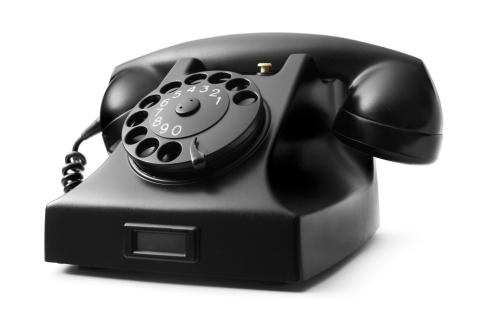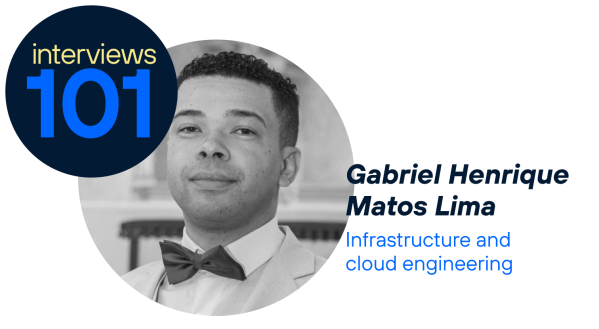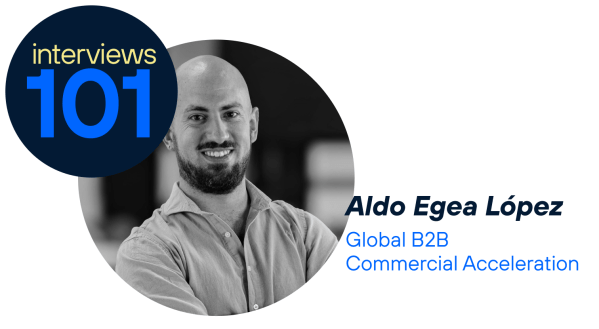Tell us a little about yourself. What does your job at Telefónica involve?
As head of the events team at Telefónica Spain, I am responsible for organising, managing and executing most of the events we hold for both customers and internal audiences: service presentations, participation in trade fairs, sales conventions, executive summits. In short, many and varied.
Once we receive a request for an event and are given a briefing, we take care of everything. From conceptualising the event and designing its identity to pre-event communication, preparing all aspects, coordinating with all areas involved, execution and post-event follow-up.
Organising corporate events at companies like Telefónica is a complex challenge. What are the key elements that make it successful and memorable for attendees?
For almost all audiences, face-to-face communication is very important. You mention a word that is our mantra when organising events: memorable. Everyone is very busy, so if they decide to attend one of our events, it must have the strongest possible emotional component so that it remains in the attendee’s memory.
There are many steps to achieving this. The first thing is that the communication of the event, the invitation, must be distinctive; the guest has to think, ‘I can’t miss this.’ You have to communicate something very interesting.
How is relationship marketing integrated into corporate event planning to strengthen relationships with customers, partners and employees?
There are audiences where it is essential. For example, in large companies. The CIO or technology director of a bank is not going to search the internet or wait to see an advert about our services on television. We have to tell them first-hand.
Often, it is not enough for the sales representative to go and see them. That is where the event comes in. At the event, we not only tell them what they want to know, we also show them what concerns other companies have or what they are doing and how we at Telefónica can help them. Of course, all our events have a fundamental networking component where information and comments are exchanged, enriching the working session. And this same example can be applied to simpler or more complex events, whether with customers or employees and executives.
With digitalisation and the rise of hybrid or virtual events, what strategies do you consider essential to maintain interaction and engagement among participants?
Well, it’s not really a boom. After lockdown, yes, but now everyone prefers face-to-face events. In fact, when you hold hybrid events, many of those who are online comment that they would prefer to be there in person.
They miss out on networking and experiences that can only happen in person. From an organisational point of view, it is difficult to find the right balance of content for both audiences. What is clear is that the online part should never last more than two hours, or even one hour.
Unfortunately, the audience ‘disconnects’ much more. I would point out that an online event is not given the same importance as an in-person event. Of course, there are cases where it is much more interesting (and profitable) to hold an online or hybrid event, for example, think of SMEs. How many might be interested in what we have to say? Hundreds of thousands!
In your experience, what has been the biggest challenge when coordinating a large-scale event and how did you solve it?
Large events are a challenge, but they are what can motivate us organisers the most. First, you have to think about countless things and find the whole team involved, which is not easy, let alone coordinating it. In some cases, there are even conflicting objectives, but you have to unify them and get everyone pulling in the same direction.
Then there is the phase of starting to work on each point and each detail. It is exciting to see how the project is built, grows and is enriched by different points of view. In most of these cases, we manage them in an agile way and it is rewarding to work in these teams.
And finally, it’s time for execution. A good event organiser has not only planned everything perfectly, but also knows where things can go wrong and has a plan B. Has anything ever gone wrong, even with plan B? Of course, in my case, two or three times in more than 20 years of doing this.
When a serious problem occurs, the first thing to do is to stay calm (which is not always easy), look at the different solutions, decide on the most appropriate one and then act very quickly.
Let me give you an example. Imagine: a big event, with a large budget, many areas involved, the launch of 5G, everything is going great, we end with a drone show at night over the lake at Distrito Telefónica, the President’s office calls you to ask who did such a beautiful job and with which provider, and… they call you just before you go to bed: a small device that we gave to customers comes with a SIM card from the competition! I wanted the ground to swallow me up! But we were told that they were all Movistar cards!
The problem was that a partner, in which Telefónica had just invested, sent us the wrong batch. And we didn’t check it, of course. Crisis meeting at 8:00 a.m., email at 9:00 a.m. apologising to all customers, and in less than two days, all the guests’ devices had a Movistar SIM card.
Measuring impact is key in any marketing action. What metrics or indicators do you consider most relevant for evaluating the success of a corporate event?
That they say to me, ‘We have to do this again!’ Seriously, this is a good indicator, but there are other, much more objective ways to measure return on investment. First, there is always the simplest one, which is post-event evaluation surveys, although the reality is that response rates are usually very low.
But we have other more complex ones, such as events with large companies. In coordination with marketing and commercial planning, a flow is established to measure sales opportunities. At the end of the event, we have two types of leads interested in the service presented: those who came to the event and those who registered but were ultimately unable to attend. In the following months, we measure whether the sales representative met with each client, whether an offer was made, whether it was accepted, whether it was rejected and, if so, the reason why, etc.
And this is in terms of objective measurements, but there are other subjective ones that should not be forgotten, although they are difficult to replicate because they are usually the result of a job well done. I am referring to the event continuing to be talked about days, weeks, even months after it took place.
For 12 years in a row, we held an event that clients were always eager to be invited to. It was so highly valued that some of our contacts asked us to delegate upwards! For us, it was a source of pride and a sign of a job well done.
Looking to the future, what trends do you think will shape the organisation of corporate events and how will relationship marketing evolve in large companies?
Honestly, I think the fundamentals of large events will change little. In the initial communication of the event, yes, of course. Increasingly digital, more visual, more wow. In the execution, there will be more and more screen technology, tools, etc. But the main part, networking, is always the face-to-face relationship between people, and that will always remain the same and fundamental.
Which people who work at Telefónica would you nominate for this interview who you consider to be excellent at their job?
Chema Corella, cabinet manager to the president. A complex but very interesting job. Guillermo Bataller, head of LaCabina. He gives demos to clients, from university students to the King, the Prime Minister or the president of a large bank.








